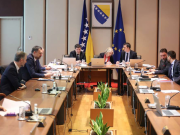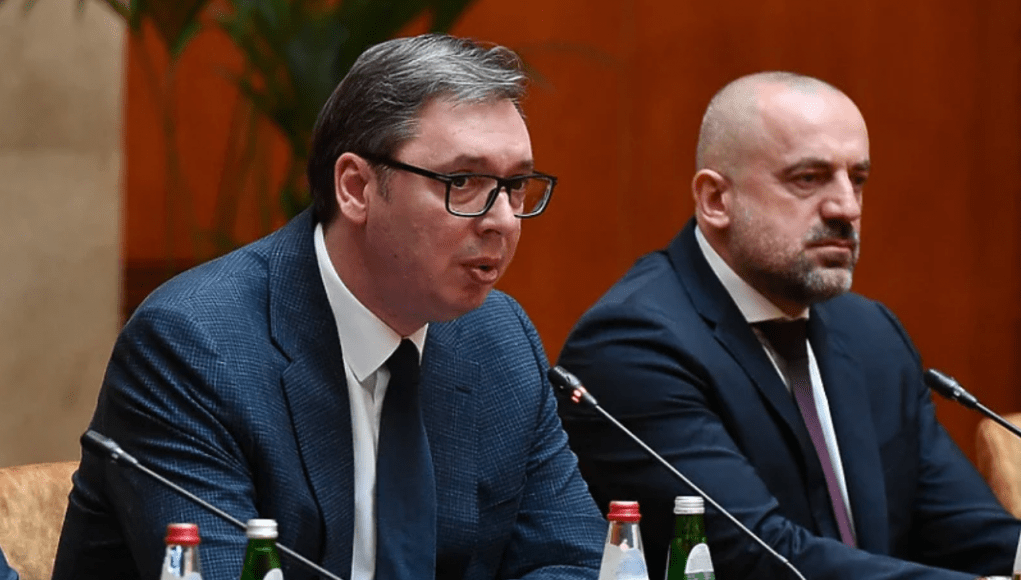All evidence indicates that the Serb militia attack in northern Kosova on September 24 was orchestrated by Belgrade. The killing of a Kosova policeman and the use of an Orthodox monastery is part of a recurring pattern of provocations designed to achieve three goals: burying the talks for “normalization” between Serbia and Kosova, testing the international response to organized violence, and preparing the conditions for forcible secession.
Dozens of well-armed Serb gunmen dressed in combat uniforms provoked the gunbattle with Kosova’s police near the border with Serbia. The immediate objective was to demonstrate that the government in Prishtina does not control the territory and that armed gangs can operate with impunity. The killing of three of the gunmen will also create martyrs for Serbian nationalists, with
President Aleksandar Vučić claiming they were local Serbs no longer willing to tolerate “Kurti’s terror.” Belgrade is painting a mythical picture of repression and suffering among the Serbian minority even though Serbs in Kosova benefit from more collective rights than any minority in the Balkans.
By creating numerous incidents, Belgrade hopes to destabilize the country and demonstrate that Prishtina is not a genuine partner. Over the past year, a number of incidents have been staged, including road blockades, election boycotts, attacks on municipal buildings, and violent assaults on policemen and NATO troops. The response of Washington and Brussels to each incident has assisted Vučić because “both sides” are blamed for the conflict and thereby reinforce the false narrative of minority repression.
Regular provocations serve to delay and ultimately derail any talks mediated by the EU. Indeed, the onus has been placed on Prishtina to enable the formation of a Serbian “municipal association” before talks can proceed. In other words, the Albin Kurti government is expected to create the very structure that will partition Kosova. EU envoy Miroslav Lajčák and his US counterpart Gabriel Escobar together with the US and EU ambassadors act deaf whenever Vučić declares that he will never recognize Kosova and therefore never “normalize” relations. There is little point for dialogue if one party refuses to accept the existence of the other, as we are also witnessing in Russia’s attack on Ukraine.
The second objective of the Serbian paramilitary attack is to test the response of Washington and Brussels and the reaction of the limited NATO contingent in Kosova. If NATO forces do not take strong measures to help Kosova’s police by patrolling the border and searching and disarming all criminal and militia formations in northern Kosova then Belgrade will conclude that it can pursue more intensive violence. If the Kosova Armed Force is not bolstered into a more sizeable and well-equipped regular army that can defend the country’s borders and launch the process of NATO accession then Belgrade will continue to send, fund, and arm Serbian militia groups with impunity. US and EU officials have failed to learn the crucial lesson of the wars in the 1990s – you only deter and defeat the aggressor by demonstrating superior force and willpower.
The third Vučić objective is to develop a potential Donbas or Crimean scenario for Kosova. The plan for Kosova’s partition between Serbia and Albania floated during the Trump presidency and largely supported by Belgrade and Tirana has been shelved. Hence, Belgrade’s objective has shifted to disabling Kosova from functioning as an integrated state and controlling part of its territory. This is the underlying purpose of establishing a Serbian entity cloaked as a municipal association. However, because the government in Prishtina resists such suicidal moves despite international pressure, Vučić is now opting for outright violence. By staging armed clashes, he calculates that Western powers will lean even more heavily on Prishtina to allow for the creation of an autonomous Serb entity to prevent escalation.
At the same time, Serbia’s security services are preparing for a broader rebellion in the northern municipalities. An attempted crackdown by Kosova’s police would then justify a direct Serbian military intervention. Belgrade has periodically paraded its military along Kosova’s northern borders and threatened to intervene to “protect” the Serbian population. These are evidently practice runs for infiltration, invasion, and occupation to enable the creation of a local Serbian security force and puppet administration. To deter such a scenario, NATO forces need to be significantly increased and armed with heavier equipment to confront any Serbian intrusions.
The attack on Kosova would most likely be closely coordinated with the Serb entity in Bosnia-Herzegovina and with Russia. The Dodik government in Banja Luka can simultaneously pursue the separation agenda through a snap referendum, withdrawal of all Serb officials from Bosnian state institutions, the creation of a patrolled border with the Bosnian Federation, the deployment of armed militias, and the formal declaration of independence. The calculation would be to dissipate Western reactions by presenting a fait accompli in both Kosova and Bosnia. Provocations and acts of violence can also be staged in Montenegro to further distract Western attention. While Milošević picked off one target at a time during the 1990s, his pupil Vučić may decide to act concurrently on several fronts.
This Greater Serbia scenario will also require the green light from Moscow, as the Kremlin seeks retaliation against the West for its massive military losses in Ukraine. Russia would provide political support, diplomatic cover, an information war justifying Belgrade’s intervention, finances, weapons, and volunteers, if any can be spared from the war in Ukraine. It will also bank on the naivety of Western officials currently managing the Balkans. For Belgrade, if the EU and US cannot deliver Serbia’s regional dominance and expand its territories then Moscow will be eager to assist especially as this serves Russia’s anti-Western strategic interests.
(Janusz Bugajski is a Senior Fellow at the Jamestown Foundation in Washington DC. His recent book is Failed State: A Guide to Russia’s Rupture. His forthcoming book is titled Pivotal Poland: Europe’s Rising Strategic Player)
































